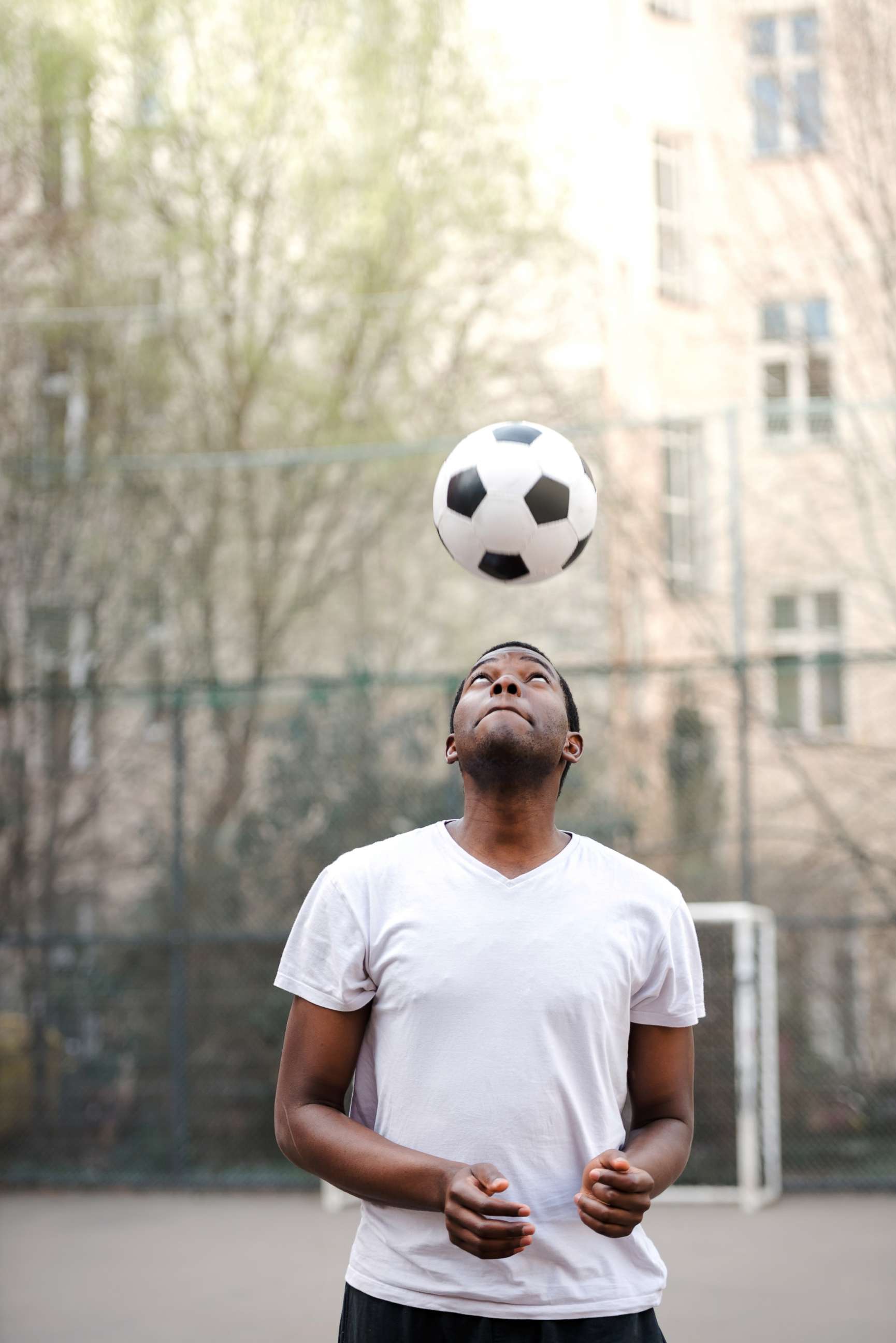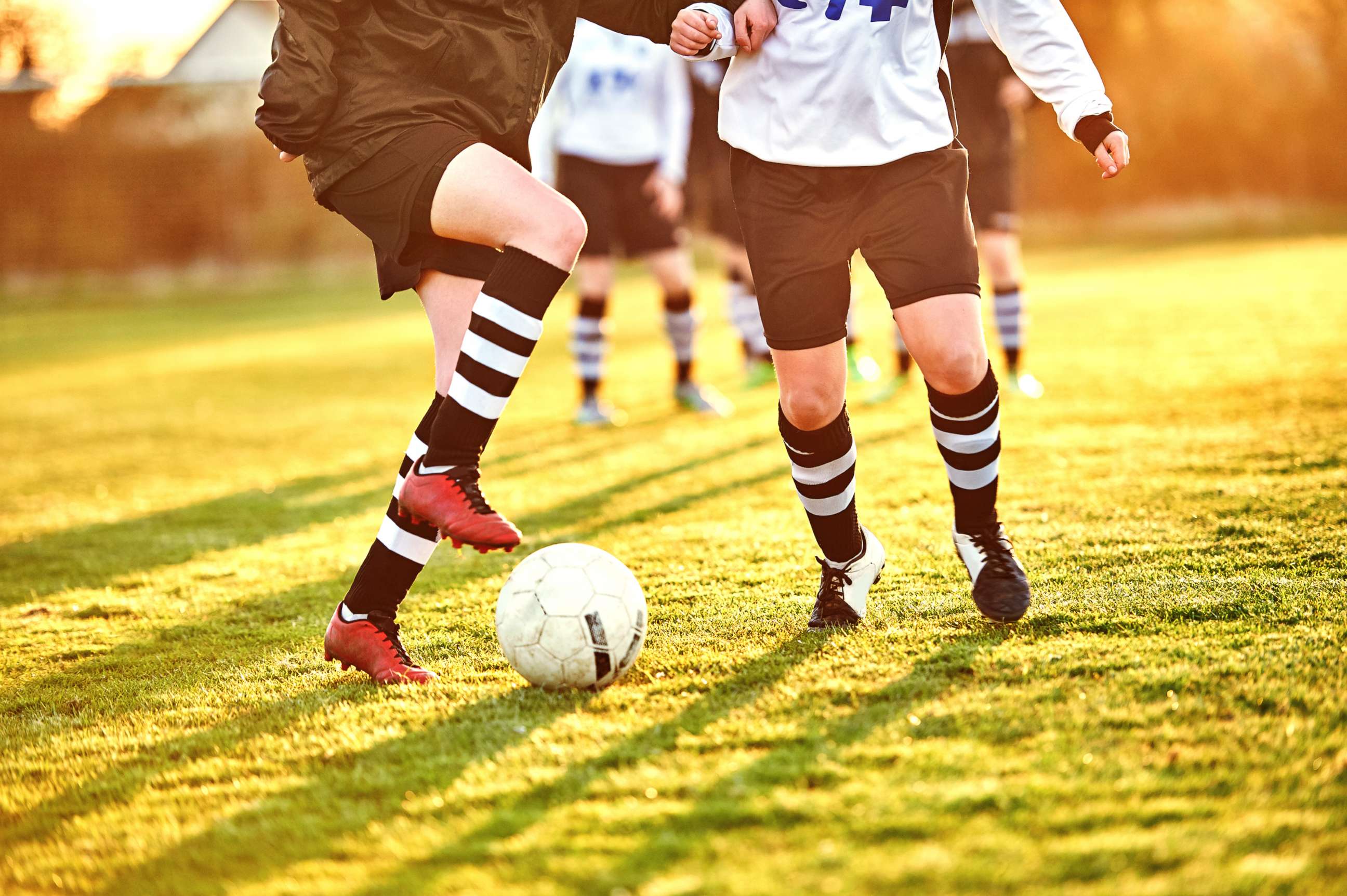Could soccer 'heading' lead to greater brain injury for women than men?
Heading -- deflecting a ball with the head in soccer -- is a way to send a teammate the ball, and a way to score. But does this sports practice lead to more brain injury in women than in men?
It seems so, according to a study published Tuesday in the journal Radiology.
Heading has recently come under scrutiny due to increasing evidence of short-term consequences for the brain, including concussions, which do seem to happen more in women than men.
A research team led by Dr. Michael Lipton, professor of radiology at Albert Einstein College of Medicine and Montefiore Medical Center, looked at whether or not heading had similar effects on men and women’s brains.

“We’re looking at the consequences of repeated sub-concussive injuries -- impacts to the head that don’t lead to a diagnosis or symptoms of concussions,” Lipton told ABC News. "Lower fractional anisotropy [FA, a measure of brain injury] being associated with heading isn’t a new finding. The focus here was the sex differences in the context of that repetitive exposure.”
His team selected 49 men and 49 women between ages 18 and 55, who were already part of a larger long-term study on adult amateur soccer players, and had them complete surveys about heading history in the past 12 months.
In one year, both genders had similar numbers of heading events -- a total of 487 for men, and 469 for women.
But when their brains were looked at using magnetic resonance brain imaging (MRI), researchers found more areas of brain injury in women than in men of similar age and number of heading events.
“We looked at where in the brain was the amount of heading associated with FA [the measure of brain injury]," Lipton said. "In men, there were three areas where we found a significant association. In women, we found eight areas."
The increased susceptibility of women to heading wasn’t too surprising.
It’s been “sort of known and suspected that women tend to have worse outcomes following concussions and other types of head injury,” said Dr. Lipton, “but now we’re really seeing something that is detectable at the level of brain tissue. It's not an artifact of reporting or types of symptom measures that are usually the basis of assessing presence of injury.”

What was surprising was the magnitude of the difference when it came to the volume of brain tissue affected.
“It kind of floored me,” Lipton admitted. “Women had five times more tissue volume affected than in men. Location of pathology can vary; if we see fewer or more areas [between groups], that could simply reflect the variability of the nature of the injury. But a volume effect tells us potentially about severity [of injury].”
The gender difference was significant when it came to concussion frequency, too -- women reported (on average) one concussion in their lifetime. Men reported none.
These structural brain consequences in women who played soccer were after a one year report of soccer headings; they would have to check again in future years to see how long these changes last.
“We’re interested in the way these effects change over time, in the potential for progression and recovery, if someone decreases or stops their heading,” Lipton said. “It’s unclear to what extent this is a permanent effect.”
An obvious note for players: until more research can be done, women should try to limit the number of headers in gameplay and practice.
Unfortunately, researchers just don’t know yet how many are too many.
“It’s important to recognize this is a preliminary finding,” Lipton said. “There’s not enough data to make explicit recommendations. But there is enough here to be concerned and motivate more research.”
What can people do until research finds more answers?
Keep those annual doctor appointments and sports physicals. A doctor who has known someone for a long time is the best person to diagnose mental changes.
Dr. Stephanie Sophie Lee is a pediatrician and preventive medicine resident in South Carolina and a resident in the ABC News Medical Unit.




